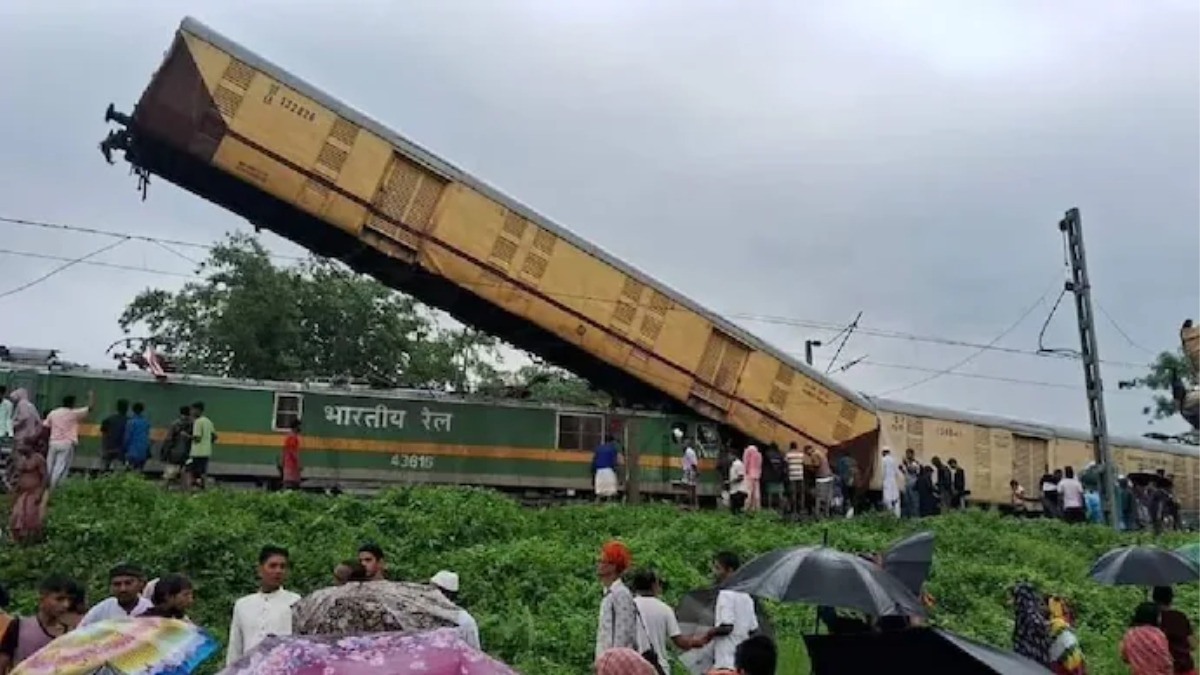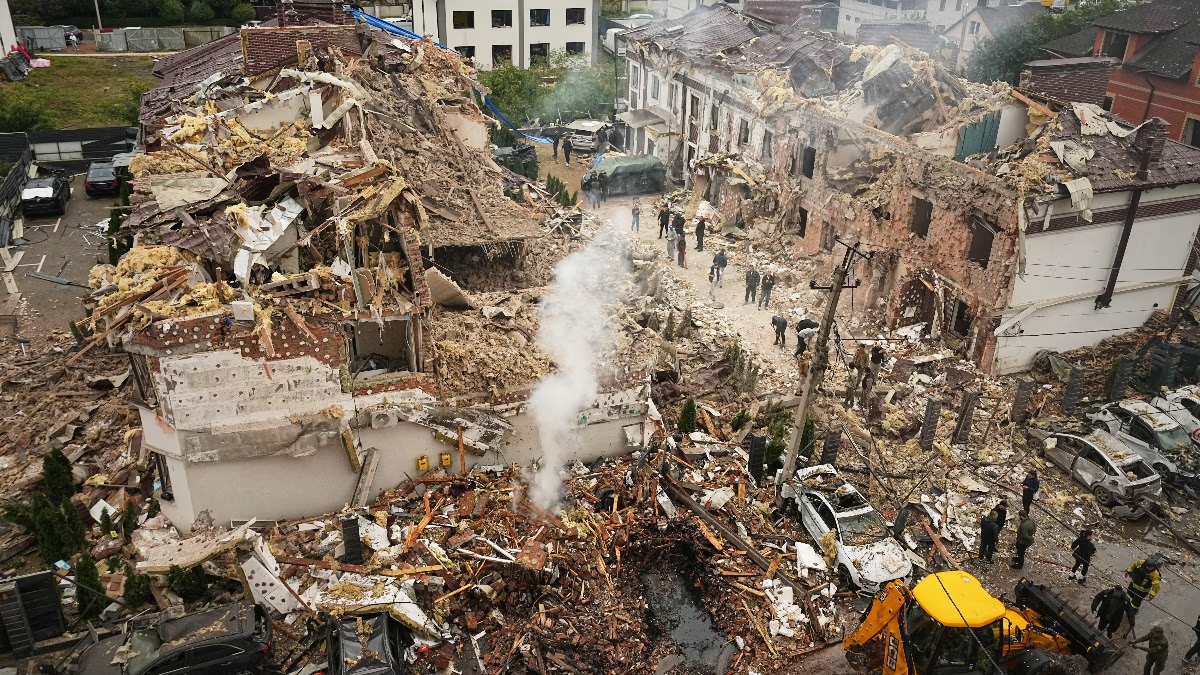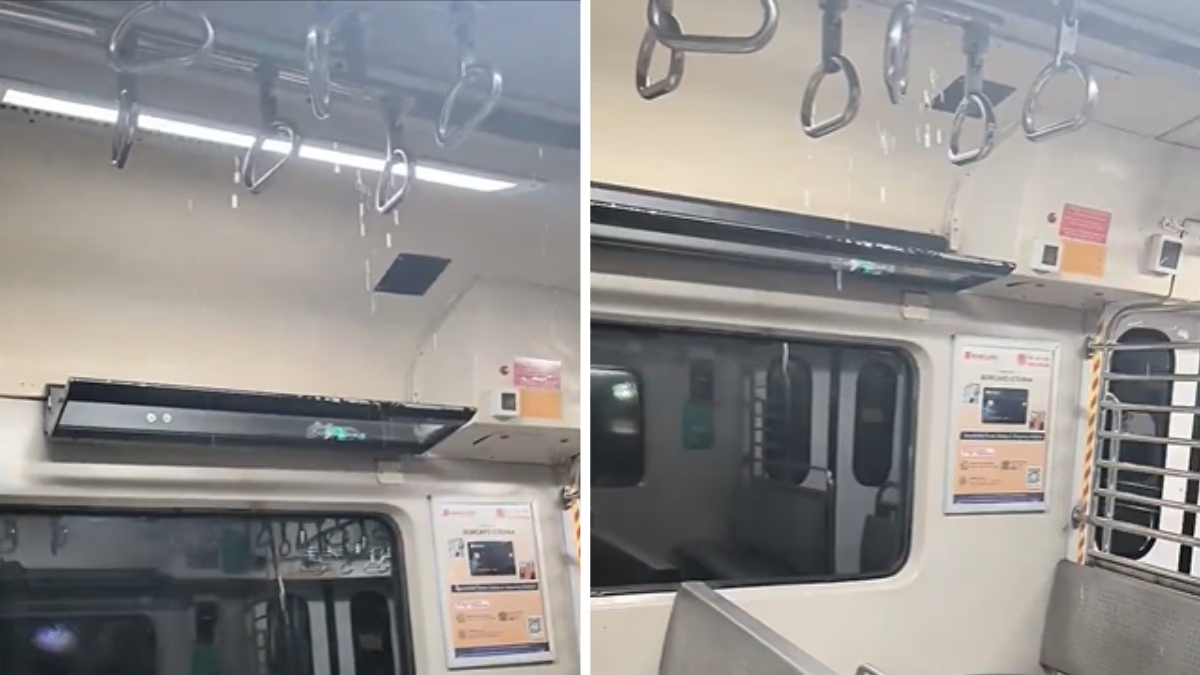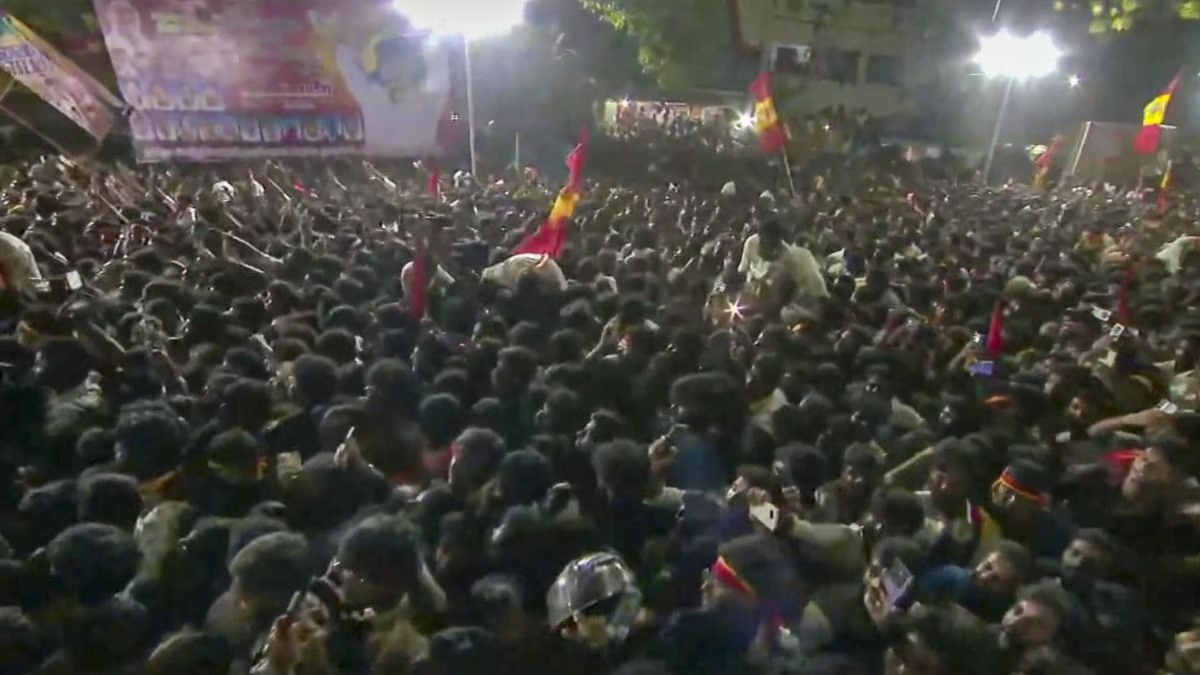The preliminary investigation into the rail accident near New Jalpaiguri in West Bengal points to non-adherence to standard procedures during a navigation signal failure as the major cause. This disastrous incident claimed the lives of 9 individuals and injured over 50. It raises critical questions: how do trains operate when automatic signaling systems malfunction? According to railway officials, the route where the accident occurred had been experiencing signal issues since morning.
Documents accessed by Aaj Tak, along with open-source data, reveal that the locomotive pilot responsible for colliding with the Kanchanjunga Express had violated the standard operating procedures designed for such circumstances, driving the train well beyond its prescribed speed. A thorough investigation into this incident is currently underway.
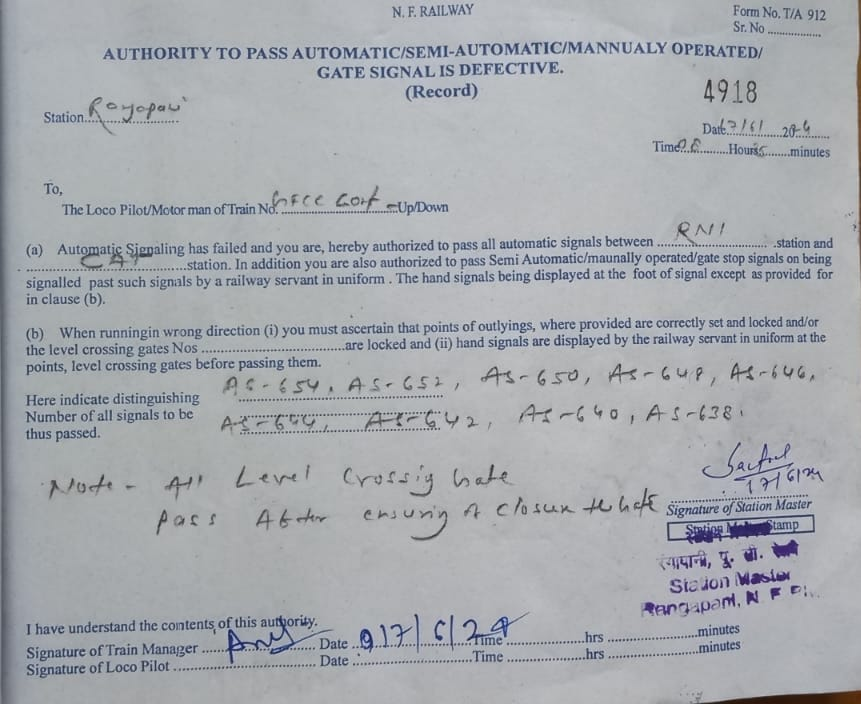
Source: aajtak
The freight train struck the Kanchanjunga Express from behind. Since the automatic signaling system was faulty, the passenger train had received a 'paper line clearance ticket' (PLCT) at 8.20 AM from the Rangapani railway station master, and the freight train received one later at 8:35 AM. Usually, the automatic block signaling (ABS) rules require the locomotive pilot to be cautious and have a track clearance certificate, apart from the PLCT issued by the station master, in such cases.
The 'paper line clearance tickets' granted to both the freight and the Kanchanjunga Express for crossing the route between Rangapani station and Chhatarhat junction indicate that the signals failed at least 9 times within a two-hour span. Confirmations through railway officials and open-source documents accessed by Aaj Tak show that trains are issued a T/D912 ticket in prolonged signal failure scenarios. The station master at Rangapani, in the case of the Kanchanjunga Express, had issued a T/A912 ticket.
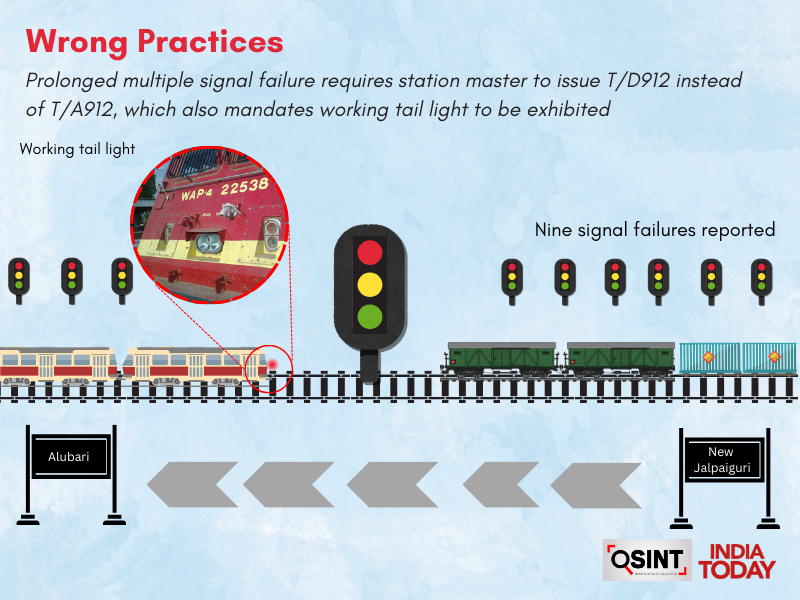
Source: aajtak
Railway officials explain that because the signal fault was expected to be resolved quickly, it was not declared a long-term issue, hence the automatic block signaling rules were followed. A T/A912 ticket means that the train should only travel at a maximum speed of 10 kilometers per hour, whereas a T/D912 ticket permits speeds up to 25 kilometers per hour. The locomotive pilot usually receives caution orders specifying this. In this instance, the gatekeeper of the previous crossing reported that the average speed of the freight train was 40-50 kilometers per hour.
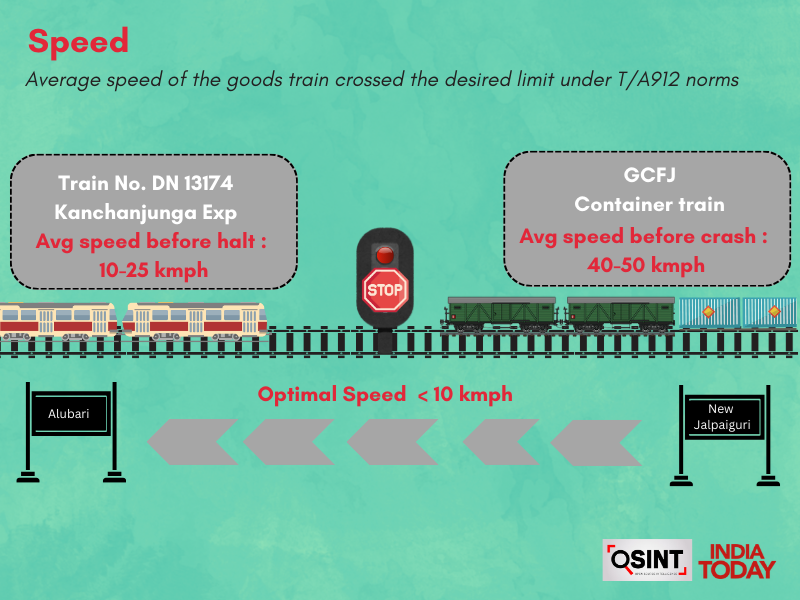
Source: aajtak
Aside from rules about train speeds, railway standards also stipulate that trains should be stopped as far ahead of a faulty signal as possible. During the day, a train must stop for 1 minute and at night for 2 minutes before a red signal. The freight train's driver allegedly breached this rule.
Railway officials stated, 'The protocol for a red signal during an automatic signaling system malfunction is for the locomotive pilot to stop the train for 1 minute, then proceed ahead at moderate speed while sounding the horn. In this case, it appears the freight train's pilot did not reduce speed at the signal.' Also, after crossing a signal, the pilot must ensure there is a minimum distance of 150-200 meters, or two clear OHE (overhead equipment) spans, between his train and any preceding train or obstruction on the line.
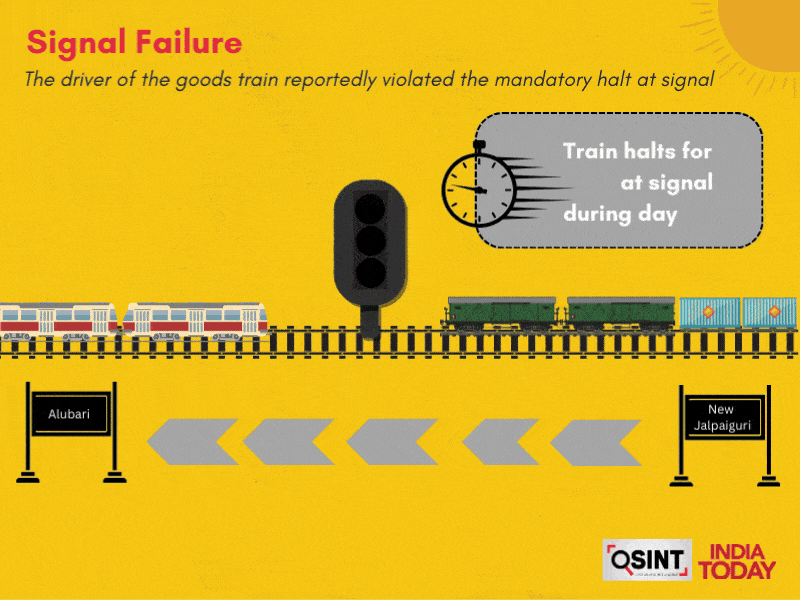
Source: aajtak
Furthermore, when a train is halted in an automatic block signaling section, the guard must immediately display a 'stop' hand signal and ensure that the tail board or tail light is properly visible. According to the standard operating procedures, a train can only enter a block station if it has been permitted to do so from the preceding station, a clearance provided in writing by the station master. In the Bengal incident's case, however, the fault did not solely lie with the freight train's locomotive pilot. The ground staff, signaling department, and the delay in implementing the anti-collision system also played a part.
M. Raghavaiah, the general secretary of the National Federation of Indian Railwaymen (NFIR), shed light on the issue of vacant positions, leading to excessive pressure on railway employees. He pointed out, 'Fifteen percent of locomotive pilot positions are vacant. This is a significant job category in the railway department. They don't get adequate rest and are even unable to take leave for family events.' The automatic train collision prevention system 'Kavach', made in India, which helps prevent accidents if two trains end up on the same track, was not available on the route. So far, the Kavach system has only been installed on 1465 km of routes and in 121 train engines.
